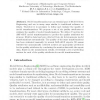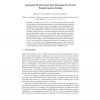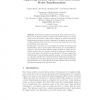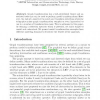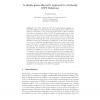ICMT
2009
Springer
14 years 7 months ago
2009
Springer
Abstract. Constraint programming holds many promises for model driven software development (MDSD). Up to now, constraints have only started to appear in MDSD modeling languages, bu...
ICMT
2009
Springer
14 years 7 months ago
2009
Springer
Model transformations are an essential part of Model Driven Engineering and are in many ways similar to traditional software artifacts. Therefore it is necessary to define and eva...
ICMT
2009
Springer
14 years 9 months ago
2009
Springer
Testing model transformations requires input models which are graphs of inter-connected objects that must conform to a meta-model and meta-constraints from heterogeneous sources su...
ICMT
2009
Springer
14 years 9 months ago
2009
Springer
Abstract. In Model-Driven Engineering models and metamodels are not preserved from the evolutionary pressure which inevitably affects almost any artefacts. Moreover, the coupling b...
ICMT
2009
Springer
14 years 9 months ago
2009
Springer
In software product line engineering, feature composition generates software tailored to specific requirements from a common set of artifacts. Superimposition is a technique to me...
ICMT
2009
Springer
14 years 9 months ago
2009
Springer
Abstract. Model-driven software development often involves several related models. When models are updated, the updates need to be propagated across all models to make them consist...
ICMT
2009
Springer
14 years 9 months ago
2009
Springer
Abstract. The GRACE International Meeting on Bidirectional Transformations was held in December 2008 near Tokyo, Japan. The meeting brought together researchers and practitioners f...
ICMT
2009
Springer
14 years 9 months ago
2009
Springer
Abstract. Graph transformation has a well-established theory and associated tools that can be used to perform model transformations. However, the lack of a construct to match and t...
ICMT
2009
Springer
14 years 9 months ago
2009
Springer
Abstract. The QVT Relations (QVT-R) transformation language allows the definition of bidirectional model transformations, which are required in cases where a two (or more) models ...
ICMT
2009
Springer
14 years 9 months ago
2009
Springer

